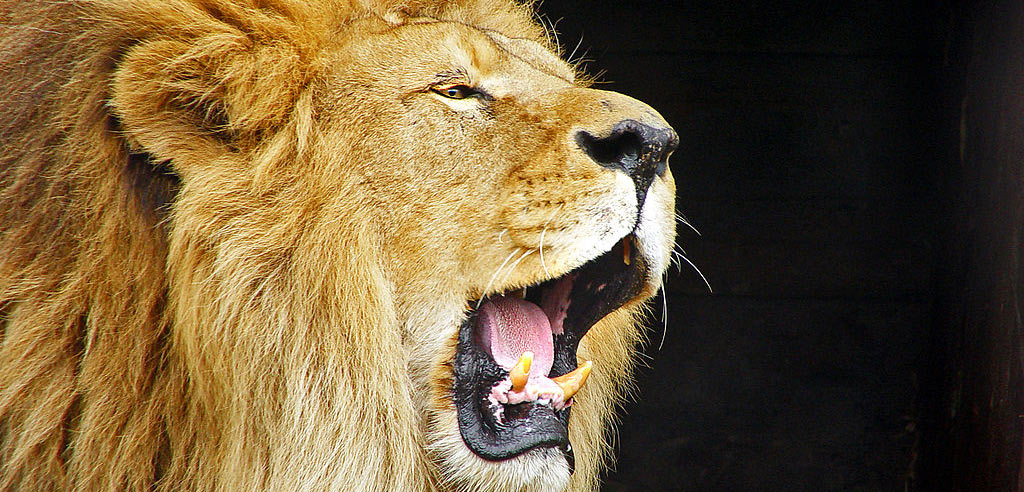A Brief History

The Lions Roar, a powerful symbol in both Hindu and Buddhist culture.
In these blog posts I hope to cover the historic background of the arts we teach. As the indo-Tibetan art of SiJiHao (Lions Roar!) forms the backbone of our schools syllabus and has a lengthy, fascinating and rich history, I feel this is the best place to start. It should be noted that I lent heavily on my teacher Sifu Richards' research for this article so any credit goes to him, and the mistakes are all my own.
The roots of Lions Roar Martial Art
From 330BCE to 600CE India acted as a melting pot for various cultural, spiritual and martial systems. Greek, Persian, Afghan and native Indian systems intermingled and intermixed creating powerful strains that would have profound influence upon the world to this day. A system named Simhananda Vajramukti (Lions Roar Fist Art) was practiced and its founding was attributed to Indra. Even historical Buddha, being of warrior caste, is recorded as having learnt the art from the Guru Kshantideva. From this mix, Buddhism emerged and travelled with monks to Tibet (amongst other places) where it adapted to local traditions and, to some extent, the shamanistic traditions of the Tibetan people (Bön).
Alongside this, various arts travelled, including the Lions Roar martial art. The physical literature of the Lions Roar style contained a great deal of Hindu imagery and philosophy. This was not a problem as Tibetan Buddhism had largely already absorbed these archetypes. Within classical Hinduism as well as Tibetan Buddhism there is a Vajrayana (Tantric) tradition, known in Tibet as “yesh cholwa”, or “crazy wisdom”. This means utilising someone’s path, whatever it is, as a means of transcending it. Whilst Buddhism may not agree with violence, supressing an impulse towards it is not a solution – leaving one ‘unwhole’ or a passive-aggressive individual. If the impulse is there much better to study violence and use it as a vehicle of transformation; essentially ‘working through it’.
So the lions road became a paradoxical vehicle for transcending violence through the study of violence. It is worth noting that this was certainly not a break from Indian traditions, where there has always been a close relationship between martial arts and spiritual development. One only has to read the Bhagavad Gita to see that the central place of the warrior path in spiritual development explained (this is also true of the 24 Jainas saints and later of Sikhism).
After its further development in Tibet the art then crossed the then-culturally-blurred border into China, and the lineage gradually made the massive voyage from from the far North to the South of China. In China, Lions Roar is sometimes referred to as Indra’s fist, pointing to the art's Indian origin, or Lama Pai (Tibetan Monk Sect) in reference to the Tibetan influence. However it is also referred to as Hop Gar (Hero Fist) in reference to the legendary fighting skills of Wong Yam who was unbeaten in full contact fighting and had a profound influence on many other systems in Canton.
From Hop Gar, the Tibetan White Crane system emerged placing emphasis on the crane aspects of the system. During the art's adaption to Chinese (Han) culture it undoubtedly continued to develop, absorbing local fighting methods and often replacing Indo-Tibetan imagery/philosophy with Chinese equivalents. Some lineage changed more then others, some maintaining the Indo-Tibetan ideals and tantra, others replacing them with Taoist or Chan practices and some becoming purely fighting systems. In the case of our Lineage it then travelled to Hong Kong with Chan Tat Fu who brought together the lineages of Kung Tow, Wong Hop Lui and Au Wing and referred to his art as ‘Join together Tibetan Lions Roar!’ (Sai-Jong Hap-Gar Si-Ji-Hao ). In the early 70s Sigung Kenneth Liu brought the art to Liverpool where my teacher, Sifu Richards, learnt it and continued the lineage.
So the art has a long, rich history! Yet Sijihao seems to retain both its Indian and Tibetan heritage. My teacher noted upon seeing a Kalaripayattu (Indian martial arts) form that it was very close to one of ours. Indeed from my own, small, experience of Kalaripayattu training I can attest that the power generation and feel of the techniques is often more similar to Indian martial arts than pure Chinese Kung Fu. There are also some techniques in the Lions Roar forms that exist in Kalaripayattu but I have never seen in the Chinese styles I have learnt. I think this is due to Lions Roar having strong basics with the 8 seeds (the fundamental power generation methods of the system) but with expansive principles allowing it to incorporate new methods whilst making them uniquely its own.
Soon I will write another article on the training methods and unique practices within the Lions Roar system.
Until then, train hard and stay well,
Chris

Interesting read, cant wait until the next Lions Roar article on training methods and hope to see some video’s in the future 🙂
Thanks Craig – it is a very interesting style!